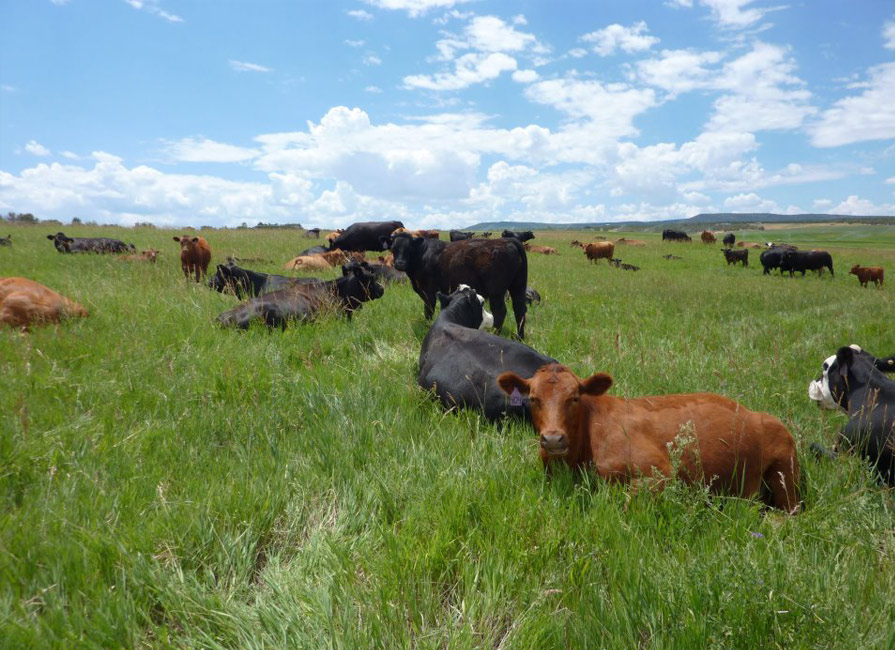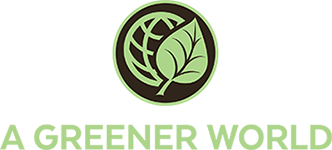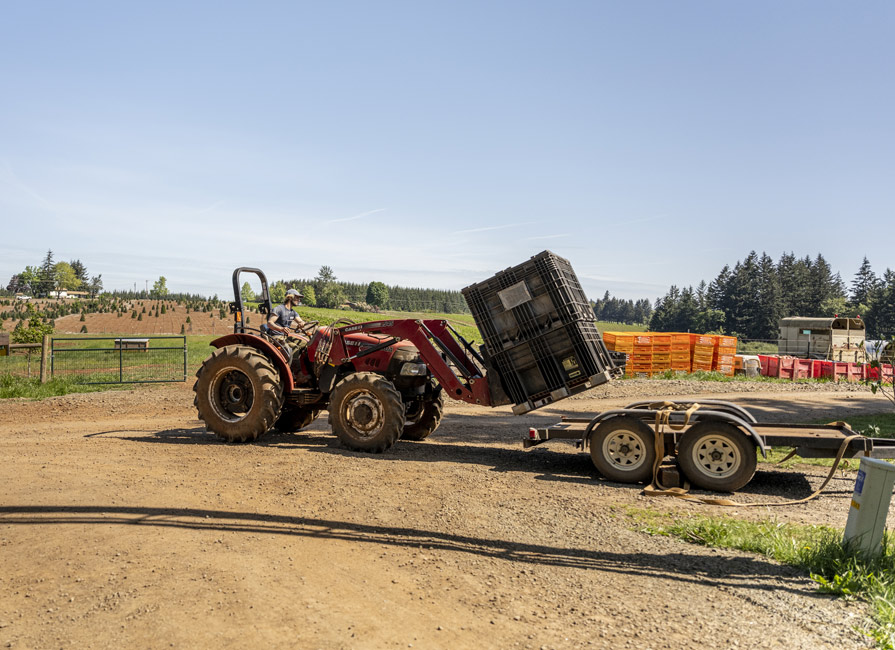One of the key attractions of our Certified Regenerative by AGW program is its practical…

Regenerative Planning
A detailed plan is an essential part of Certified Regenerative by AGW. But what does it involve—and how do you write it?
What Does ‘Regenerative’ Mean?
AGW define ‘regenerative’ as a set of planned practices that ensure a holding is not depleted by agriculture, and over time the soil, water, air and biodiversity are improved or maintained to the greatest extent possible.
What Is The Regenerative Plan?
At the heart of Certified Regenerative by AGW is a detailed management plan to help producers meet their own goals.
It is effectively a ‘roadmap’ designed by the farmer—with or without expert help—that outlines the activities and actions the farmer will undertake to manage and maintain the holding in accordance with the regenerative principles.
Following the successful launch of AGWs certified regenerative pilot in autumn 2020, the participants and/or their qualified experts have been preparing their respective regenerative plans for each farm. So what does this involve?
This article is designed to help farmers and ranchers involved in the pilot—and new entrants when the program is launched worldwide—to create an individual 5-10 year plan, based on AGW’s 11 certified regenerative principles. While we recognize that no two farms are the same, the principles are designed to apply wherever in the world you are.
The 11 Principles
- As each holding has its unique characteristics and individual solutions, regenerative agricultural holdings must be managed by the stewards of the land.
- Agricultural production can cause disruption
- to the ecosystem. A certified regenerative holding not only minimizes this disruption, but uses it to regenerate key environmental factors, such as soil health, water, biodiversity and air quality.
- Certified regenerative agriculture works to maintain, restore and build soil health to the best extent possible for that location and encompasses agricultural practices, planning and re-evaluation in order to deliver success over time.
- A significant part of water, fish and riparian habitats occur on or around farmland, and many agriculture systems are large consumers of water; thus, certified regenerative stewards must play a key role in helping to conserve and restore these habitats.
- Agricultural carbon sequestration and other management practices can mitigate global warming. A regenerative system should capture, store and cap carbon in the soil. Regenerative stewards must also avoid polluting the air as part of the atmosphere.
- Livestock can have an important role to play
- in a certified regenerative holding: ruminants are more efficient at converting forage to protein than humans are, and all livestock produce manure that can be an important source of fertility. Animals must be allowed to behave naturally and to perform natural and instinctive behaviors essential to their health and well-being.
- Any land use or cropping systems in a certified regenerative holding must balance the farmed ecosystem with natural systems. Stewards should apply high standards of conservation management to enhance landscape features, habitats and wild plant and animal species, while linking habitats and employing creative conservation projects.
- Biodiversity is an essential indicator of a successful certified regenerative farming system where wildlife habitats are integral parts of the holding. These include areas such as banks, hedges, ponds, species-rich pastures, wetland areas and scrubland.
- Human-constructed buildings become part of the landscape and contribute to the environment; they must be included in the regenerative plan and managed for resource efficiency.
- Humans are an integral part of farming and sustainability: certified regenerative holdings must be managed in a socially responsible way.
- In order for a holding to be regenerative, it must be economically sustainable. Certified regenerative holdings must have a financial plan that considers the long-term financial stability and viability of the holding and its operation.
Before You Start …
Maps of the entire holding are an essential resource, as these will be necessary to identify points during the assessment, planning and certification process. As a minimum, maps should include:
- Boundaries
- Watercourses and water sources
- Cropping
- Biodiversity interests
- Risk and opportunity points
- Assessment points
While it is useful to have separate maps for each of the above points, a number of separate maps (or even a single map) incorporating the points listed above is acceptable, as long as the information is clear. Note: it is important that all above information is legible on the map(s) and submitted with your plan, as it will be used by AGW auditors in the certification process.
You should also prepare a short description of all activities carried out on the holding—including non-farming activities such as education, conservation or tourism, as well as any historical background to the holding.
The Assessment
Soil
- What is the status of your soil today?
- How are your farming activities impacting soil health, structure or biodiversity?
- What practices may have been carried out on the farm before that could be affecting your soil? Where is soil compaction a risk—and how can you avoid it?
- Where and how are you allowing runoff of topsoil? For example, are you leaving fields bare overwinter?
- What chemicals or synthetic substances are you using, either for cropping or livestock?
Water
- Identify all watercourses and water sources on the holding
- How healthy are your watercourses?
- What activities carried out that present a risk to water quality and riparian habitats?
- What cropping activities could affect water quality?
- What livestock activities could affect water quality?
- Where and how do you source irrigation water?
Air
- Prepare an inventory of the machinery and equipment used on the holding, including all fossil fuel and carbon-burning technologies Include estimated emission rates (or annual fuel usage)
- How is farm waste disposed of? Is it burnt on or off farm?
- Look at fugitive dust emissions from housing, including fans on housing or other activities carried out, such a3s grain handling and storage or feed milling.
- Is dust from farm tracks or field activities a potential risk?
Livestock
- Consider housing and pasture or grazing land, feeding and drinking areas and general pasture and grazing management. What is the environmental impact (on and off the farm), including brought in feed or supplies?
- What is you pasture or forage worth? Are you testing for nutritional content?
- Animal health and welfare: will at least one species on the holding be capable of being Certified Animal Welfare Approved by AGW within in 12 months? Will all species be capable within five years?
Land Use And Cropping
- What crops are you growing? What are your current rotations?
- What cultivation practices do you employ?
- What are your current fertility building practices? List all fertilizers and nutrients currently applied
- What are your current pest, disease and weed control/prevention strategies?
- Are your inputs or practices prohibited in the Certified Regenerative by AGW standards?
Wild Harvesting
- Are you harvesting wild species from the holding?
- What quantities do you harvest annually? Are any of these species threatened or endangered?
- How do you ensure natural regeneration of the target species?
Biodiversity
- What flora or fauna is present on the holding, including migratory bird/animals species?
- Are there any endangered species or nationally/internationally protected species?
- Are there any habitats of local, national or international importance?
- Is the holding in a designated protection area? How are your current activities affecting biodiversity on the holding?
Buildings
- List and identify all buildings, along with their use
- Do the buildings present any risks to the environment?
- Do you have plans for any new buildings or infrastructure? Are there existing buildings that could be restored or repurposed?
- What energy is used or lost from existing buildings? What opportunities are there with new and existing buildings?
- How is waste disposed of?
- Is rainwater collected? How is it used?
Social Impacts
- Do all workers have the freedom to associate, to organize and bargain collectively?
- Do you have a procedure in place for your workers to express their grievances?
- What are the terms of employment?
- What age is the youngest you would employ? How do you ensure no discrimination towards workers?
- Provide details of your disciplinary procedures. How do you ensure a safe and hygienic working environment for all workers?
- Give details of housing provided to workers. How do you ensure worker housing is adequate, clean and safe? What is the cost to the workers? How many hours per week do workers work? Where overtime is carried out, how is it agreed? What are your workers paid? Is this recorded? Do your workers all have access to banking and financial planning?
- How often do workers get a rest day?
- Are there any local/indigenous communities? How do your activities impact on them?
- What is your current engagement with local and the wider community?
Financial
- Is financial planning carried out?
- Are you currently receiving any grants or environmental payments?
- Is the holding and all activities adequately insured?
The Management Plan
The plan is used to detail methods and timescales that you are putting in place to mitigate the risks, achieve the opportunities and change your practices to meet the Certified Regenerative by AGW standards, as identified in the assessment. The ‘best practices and standards’ section is intended to help you put your management plan in place. For each area, detail:
- Methods/practices to be employed
- Timescales
- Measurable results: in other words, how will this be assessed and how often? You might consider test results, photos and so on.
- How will you know when your target or equilibrium has been met? How will you maintain this?
You need to have a chart of assessment results in this part of the plan, which will need updating annually and compare against your goals and strategies.
Where you are using prohibited practices or substances, detail how you will remove these or reduce their use to a point they are no longer required. This must also be measurable with timescales included.
Make sure to identify at what point you estimate the regenerative process on your holding will be self-sufficient.
The following management plans are required within this section of the plan, guidance documents are available on our website.
- Management plan detailing watercourse or aquatic habitat protection or restoration
- Goals for the integration of livestock into the farm ecology
- Nutrient management plan
- Cropping system plan
- Integrated pest management plan
- Plan for the protection or improvement of biodiversity and sensitive flora and fauna
- Plan to control or eradicate invasive species
- Plans covering the construction of buildings and roadways
- A recycling program and plan to reduce farm waste
- Plans covering human and social factors
What Happens Next?
Use the pre-submission checklist on our website to ensure you have all the necessary information for your regenerative plan and all supporting documents ready to submit to AGW. It is import-ant that all available information is submitted or it could delay the next stages of the process. Your plan will then be reviewed by AGW’s panel of qualified experts, with specialists covering all the principles of regenerative certification. The idea of the panel review is to ensure:
- Consistency between participating farms Risks and opportunities have been identified correctly
- Appropriate baseline assessments have been carried out (where required)
- Management plans are realistic and compliant
- Methods, plans and timescales are measurable
Once your plan has been reviewed and agreed by our panel, you are ready for your first audit. An AGW auditor will then make arrangements to visit the farm, leading to the first step of the Certified Regenerative by AGW process.
Further Information
Certified Regenerative by AGW: The Certified Regenerative by A Greener World program was launched in 2020 to offer whole-farm assurance of sustainability, measuring benefits for soil, water, air, biodiversity, infra-structure, animal welfare and social responsibility. Open to all farmers, it is the only regenerative label that ensures audited, high-welfare animal management and slaughter, promoting ecological balance through continual improvement of healthy, thriving ecosystems.
In early 2021, over 50 pilot farms spanning four continents were selected to partner with AGW to evaluate standards, plans and auditing procedures in a range of environments, climates and socioeconomic parameters to ensure meaningful outcomes are achieved.
We have produced a range of information to help you along your regenerative journey—including regular webinars, an online forum and our website resource pages. If you need assistance, we are here to help. Contact your local AGW office:
North America: agreenerworld.org/certifications/certified-regenerative/
Originally published in the Fall 2021 issue of AGW’s Sustainable Farming magazine.


